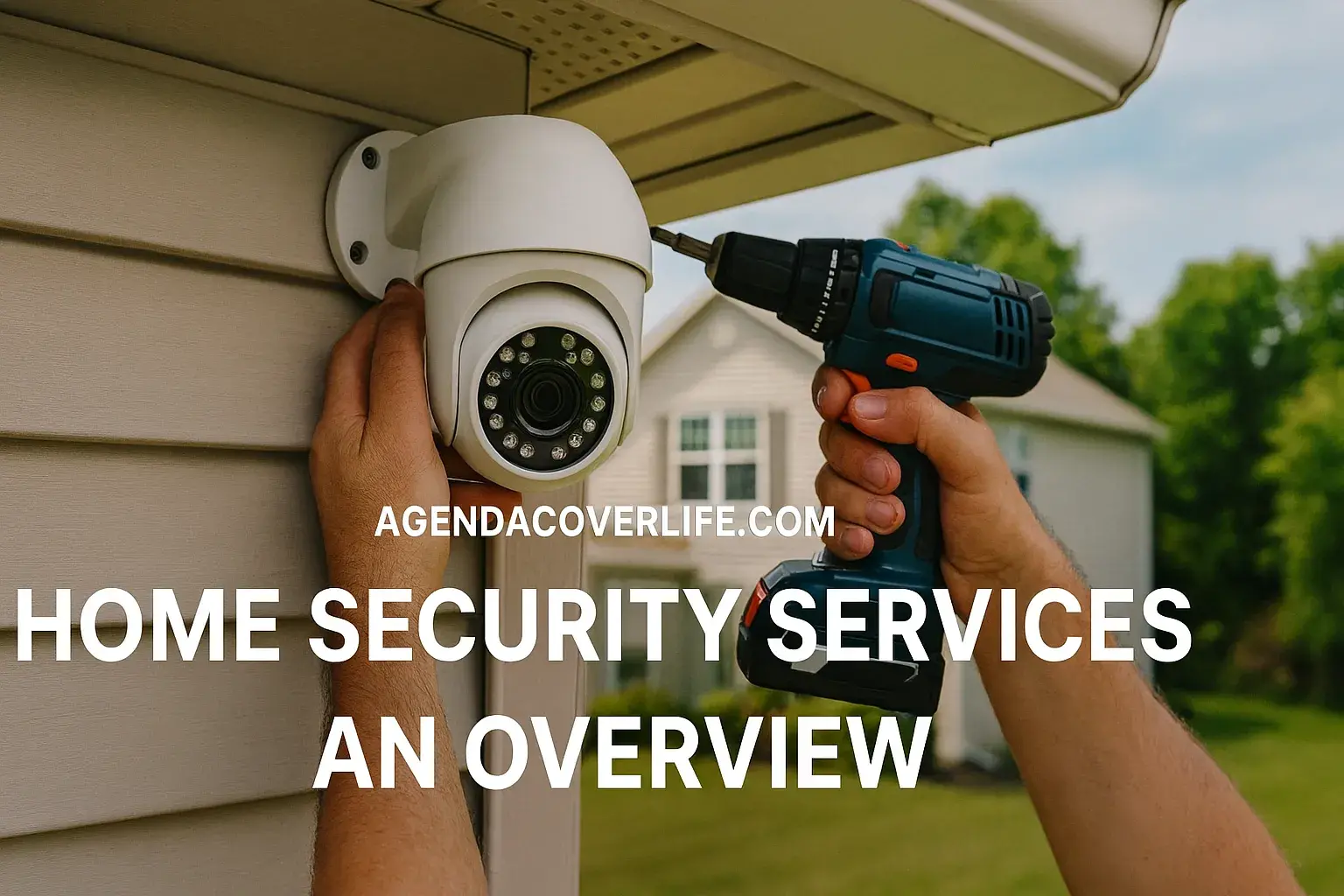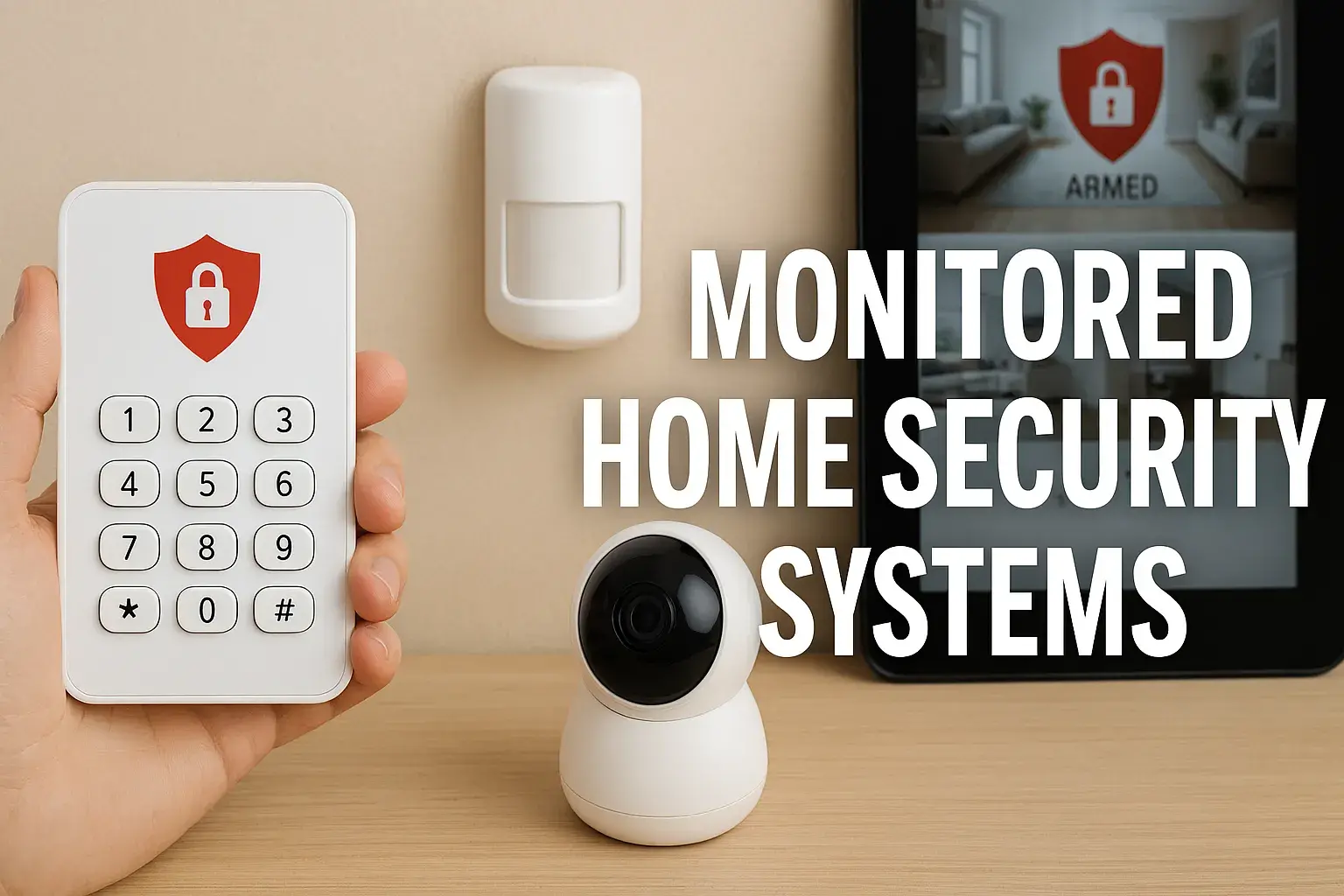Imagine your home greeting you as you arrive. The lights turn on, the thermostat adjusts to your perfect temperature, and your favorite music begins to play—all while you receive a notification that your doors are locked and your security system is armed. This isn't a scene from a science fiction movie; it's the reality of modern home automation and security.
The convergence of smart technology and traditional home safety has revolutionized how we protect and interact with our living spaces. Today's home automation systems are not just about convenience; they are powerful tools for enhancing security, providing peace of mind, and creating a more efficient household. This complete guide will delve into the world of smart home security, exploring its benefits, key features, leading devices, and how you can build a safer, smarter home in 2025 and beyond.
What is Home Automation?
At its core, home automation refers to the use of technology to control and automate household functions. This is achieved through a network of interconnected devices—often called the Internet of Things (IoT)—that can be managed remotely via smartphones, tablets, or voice commands.
Think of it as giving your home a brain and a nervous system. Devices like lights, plugs, thermostats, and speakers become "smart" by connecting to your Wi-Fi network. They can then be programmed to perform tasks automatically (e.g., turning off lights at sunrise) or controlled on demand from anywhere in the world. While convenience is a major driver, the most significant application of this technology is in the realm of home security automation.
Why Security is the Core of Smart Homes
While playing music with your voice is fun, the true value of a smart home is its ability to protect what matters most: your family, your pets, and your belongings. Smart home security transforms passive protection into active, intelligent monitoring and response.
Traditional security systems were reactive—an alarm would sound after a break-in was detected. Modern home automation security systems are proactive and preventive. They can:
-
Deter criminals with automated lighting that simulates occupancy when you're away.
-
Alert you to potential dangers like water leaks or smoke before they cause catastrophic damage.
-
Provide real-time video verification of alerts, so you know if it's a real threat or just the cat knocking over a plant.
-
Lock doors remotely if you forget, or grant temporary, keyless access to trusted guests.
This shift from reactive to proactive protection is why security is not just a feature of the smart home—it is its most critical and valuable component.
Benefits of Home Automation and Security Systems
Investing in an integrated home automation and security ecosystem offers a multitude of advantages that extend far beyond simple remote control.
-
Enhanced Security and Peace of Mind: This is the paramount benefit. With smart cameras, sensors, and alarms, you have a 24/7 watchful eye on your property. Receive instant alerts on your phone for any unusual activity, from a door opening to motion detected in a restricted area. The ability to check in on your home from anywhere alleviates anxiety and provides unparalleled peace of mind.
-
Unmatched Convenience and Control: Automate mundane tasks and control your entire home with your voice or a single app. Create "scenes" or "routines" like "Good Morning" (which turns on lights, starts the coffee maker, and reads the news) or "Goodnight" (which locks all doors, turns off lights, and arms the security system).
-
Significant Energy Efficiency and Cost Savings: Home automation systems are brilliant for reducing your carbon footprint and utility bills. A smart thermostat like Nest or Ecobee learns your schedule and adjusts heating/cooling accordingly, potentially saving up to 10-12% on energy costs. Smart plugs can shut off power to energy vampires, and automated lights ensure no watt is wasted.
-
Remote Monitoring and Access: Forgot to lock the door? Need to let in a dog walker while you're at work? No problem. Smart locks allow you to lock/unlock doors and create unique access codes from your phone. Check on pets, kids, or aging parents with interior smart home devices like cameras.
-
Insurance Discounts: Many insurance companies now offer discounts (typically 5-20%) for homes equipped with monitored security systems, smart smoke detectors, and water leak sensors. They recognize that these devices significantly reduce the risk of major claims.
Key Features of Smart Home Security
A robust home security automation system is built on a foundation of interconnected devices. Here are the essential components:
Smart Locks and Doorbell Cameras
Gone are the days of fumbling for keys. Smart locks offer keyless entry via PIN codes, fingerprint scanners, or your smartphone. You can grant temporary, scheduled access for guests and receive a log of who comes and goes. Video doorbells (like Ring or Nest Hello) are your virtual peephole, allowing you to see, speak to, and record anyone who approaches your front door, whether you're home or not.
Smart Indoor/Outdoor Cameras
These are the eyes of your system. Modern smart cameras offer features like:
-
High-definition (HD) and night vision video.
-
Live streaming and cloud/local video recording.
-
Motion detection with person/package/vehicle recognition.
-
Two-way audio communication.
-
Pan-and-tilt functionality for wider coverage.
Smart Sensors (Door/Window, Motion, Environmental)
Sensors are the unsung heroes of smart home security.
-
Contact Sensors: Placed on doors and windows, they alert you the moment an entry point is opened.
-
Motion Sensors: Detect movement within a room, useful for triggering lights or alarms.
-
Environmental Sensors: These include smoke/CO detectors, water leak sensors, and temperature sensors. They protect against some of the most common and costly home disasters, not just intrusions.
Smart Alarms and Sirens
A loud, piercing alarm is a powerful deterrent. Home automation systems can trigger built-in or standalone sirens when a breach is detected, scaring off intruders and alerting neighbors.
Professional Monitoring (Optional)
For an additional monthly fee, many systems offer 24/7 professional monitoring. If an alarm is triggered and you don't respond, trained security professionals will attempt to contact you and, if necessary, dispatch emergency services.
Top Home Automation Devices for Security in 2025
The market is flooded with options, but a few brands consistently lead the pack in reliability and integration.
| Device Category | Top Picks (2025) | Key Features |
|---|---|---|
| Security Hub | Ring Alarm Pro, SimpliSafe, Abode | Cellular backup, built-in eero Wi-Fi, easy DIY setup, extensive device compatibility. |
| Video Doorbell | Google Nest Doorbell (battery), Ring Video Doorbell Pro 2 | High-resolution video, pre-roll recording, advanced motion zones, and package detection. |
| Smart Lock | Schlage Encode Plus, Yale Assure Lock 2 | Apple Home Key support, built-in Wi-Fi, keyless entry, and sleek design. |
| Indoor Camera | Google Nest Cam (battery), Arlo Essential Indoor | 24/7 recording with subscription, event-based recording, and privacy shutter. |
| Outdoor Camera | Arlo Pro 5, EufyCam 3 | Solar charging option, color night vision, local storage, and weather-resistant. |
| Smart Thermostat | Ecobee Smart Thermostat Premium, Google Nest Learning Thermostat | Room sensors, voice control, energy reports, and HVAC monitoring. |
Integration of AI and Machine Learning in Home Security
The true "smart" in smart home security comes from Artificial Intelligence (AI) and Machine Learning. These technologies move devices from being reactive to predictive.
-
Advanced Recognition: AI can now distinguish between a person, a pet, a car, and a falling tree branch. This drastically reduces false alarms.
-
Behavioral Analysis: Systems can learn your family's normal routines (e.g., when you typically come and go) and flag anomalies that could indicate a problem.
-
Predictive Alerts: For example, a camera might alert you that a person has been loitering near your driveway for an unusual amount of time, before they attempt anything.
Smart Home Hubs and Voice Assistants for Security
A hub (like Samsung SmartThings, Hubitat, or a built-in hub in a Ring or SimpliSafe system) acts as the brain of your operation, allowing different devices from various brands to communicate with each other seamlessly. Voice assistants like Amazon Alexa, Google Assistant, and Apple Siri/HomeKit serve as a convenient voice-controlled interface.
-
"Alexa, arm my system to Away mode."
-
"Hey Google, show me the front door camera on my TV."
-
"Siri, lock the back door."
This integration creates a unified and effortless user experience, making complex security actions as simple as speaking a phrase.
Cost of Home Automation and Security Systems
The cost of home automation systems can vary widely based on the scale of your project and whether you choose DIY or professional installation.
-
Starter DIY Kit: A basic kit from Ring, SimpliSafe, or Wyze, including a hub, a few sensors, and a camera, can start between $200 - $500.
-
Full DIY System: A comprehensive system covering your entire home with multiple cameras, sensors, smart locks, and a video doorbell can range from $800 - $2,500+.
-
Professional Installation: Traditional providers like ADT or Vivint often require professional installation and multi-year contracts. Startup costs can be low, but the total cost of ownership over the contract period typically ranges from $1,000 to $3,000+.
Ongoing Costs: Be aware of potential subscription fees for features like cloud video recording (usually $3 - $20 per month per camera or for a whole system) and professional monitoring ($10 - $60 per month).
DIY vs Professional Installation
| Factor | DIY Installation | Professional Installation |
|---|---|---|
| Cost | Lower upfront cost; no contracts. | Higher upfront and/or long-term contractual cost. |
| Flexibility | High; you can choose any brand, add/remove devices easily. | Low; often locked into a specific vendor's ecosystem. |
| Setup | Requires technical comfort; setup via mobile app. | Technicians handle everything; no effort required from you. |
| Support | Online forums, knowledge bases, customer service calls. | Dedicated professional support from the company. |
| Best For | Tech-savvy users, renters, and those on a budget. | Those who want a hands-off, guaranteed setup experience. |
Future Trends in Home Automation and Security
The evolution of home security automation is rapid. Key trends to watch include:
-
Matter Protocol: A new, universal smart home standard that ensures devices from different brands work together seamlessly, simplifying setup and improving reliability.
-
Ultra-Wideband (UWB) Technology: For more precise location tracking, like your door unlocking only when your phone is right next to it.
-
Greater AI Integration: More predictive analytics, like a system that suggests you arm the security system because it noticed you've left for work later than usual.
-
Robotics: The emergence of home security robots that can patrol your home and provide mobile camera views.
Best Practices for Choosing the Right System
-
Start with Your "Why": Identify your primary goal—is it security, convenience, or energy savings? Let this guide your device choices.
-
Plan for Ecosystem Compatibility: Choose a hub and brand ecosystem (Apple, Google, Amazon, etc.) that fits your existing devices and preferences.
-
Prioritize Security: Research brands with a strong track record of regular software updates and strong encryption to protect your data from hackers.
-
Consider Expandability: Start small with a starter kit, but ensure the system can grow with your needs.
-
Read Reviews: Look for recent reviews on reliability, video quality, and app functionality.
Conclusion
The integration of home automation and security is no longer a luxury for the few; it's an accessible and powerful way to enhance the safety, efficiency, and comfort of your living space for everyone. From the fundamental protection offered by smart locks and cameras to the incredible convenience of voice-controlled routines and energy savings, the benefits are tangible and transformative.
By understanding the key components, costs, and best practices outlined in this guide, you are now equipped to make informed decisions about building your own smart, secure sanctuary. The future of home living is intelligent, responsive, and, most importantly, safe.
Ready to take the first step? Explore our curated guides and reviews of the best smart home devices on the market today to begin your journey toward a smarter, safer home!





